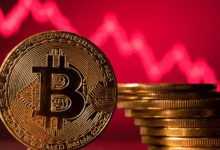Upcoming BTC and ETH Options Expiry – A Close Look

- 29k BTC options and 169k ETH options are set to expire, with a notional value of $780 million and $310 million, respectively.
- These expiries may introduce short-term volatility, impacting the prices of Bitcoin and Ethereum.
- Investors are advised to stay informed and adjust their strategies accordingly in light of these upcoming events.
This month’s crypto calendar is earmarked by a noteworthy event – the impending expiry of substantial volumes of Bitcoin (BTC) and Ethereum (ETH) options. The quantities involved are impressive, potentially having an impactful effect on the dynamics of the market.
For Bitcoin, there are about 29k options contracts queued up for expiry. The current landscape reveals a Put Call Ratio at 0.81, while the max pain point is around $27,500. When these numbers are transformed into dollar terms, we’re looking at a significant figure. The notional value of these Bitcoin contracts stands approximately at a whopping $780 million.
But that’s not all. Ethereum is also due for a similar event. A more considerable number of options are on the edge of expiry – 169k, to be exact. These contracts hold a Put Call Ratio of 0.96 with a max pain point hovering at $1,800. If we delve into the notional value of these Ethereum contracts, it represents an astounding $310 million.
The expiry of these contracts isn’t something to be taken lightly. It might be the catalyst for short-term volatility in the crypto market, potentially affecting Bitcoin and Ethereum prices. The fluctuations might even ripple through other cryptos, subtly altering their trajectory.
Investors, traders, and market watchers need to brace themselves for potential price swings, which could, in turn, require adjusting their investment and trading strategies. The crypto market, known for its dynamic nature, could see a shifting landscape in light of these upcoming events.
As always, information is power in this fast-paced industry. Keeping oneself informed about such events is essential for navigating the unpredictable waters of cryptocurrency investments.






 Bitcoin
Bitcoin  Ethereum
Ethereum  Tether
Tether  USDC
USDC  Dogecoin
Dogecoin  Cardano
Cardano  TRON
TRON  Chainlink
Chainlink  Stellar
Stellar  LEO Token
LEO Token  Hedera
Hedera  Bitcoin Cash
Bitcoin Cash  Litecoin
Litecoin  Monero
Monero  Dai
Dai  OKB
OKB  Gate
Gate  Ethereum Classic
Ethereum Classic  Cronos
Cronos  VeChain
VeChain  Cosmos Hub
Cosmos Hub  Algorand
Algorand  KuCoin
KuCoin  Maker
Maker  Stacks
Stacks  Tether Gold
Tether Gold  IOTA
IOTA  Theta Network
Theta Network  Tezos
Tezos  Zcash
Zcash  TrueUSD
TrueUSD  NEO
NEO  Polygon
Polygon  Dash
Dash  Zilliqa
Zilliqa  Synthetix Network
Synthetix Network  Qtum
Qtum  0x Protocol
0x Protocol  Basic Attention
Basic Attention  Decred
Decred  Siacoin
Siacoin  Holo
Holo  Ravencoin
Ravencoin  NEM
NEM  DigiByte
DigiByte  Enjin Coin
Enjin Coin  Ontology
Ontology  Nano
Nano  Hive
Hive  Waves
Waves  Lisk
Lisk  Status
Status  Steem
Steem  Pax Dollar
Pax Dollar  Numeraire
Numeraire  BUSD
BUSD  Huobi
Huobi  OMG Network
OMG Network  Bitcoin Gold
Bitcoin Gold  Ren
Ren  Augur
Augur  Bitcoin Diamond
Bitcoin Diamond  HUSD
HUSD